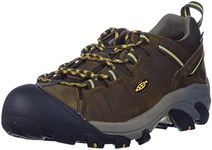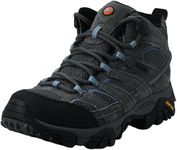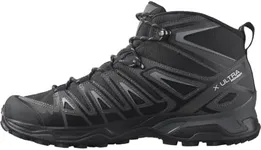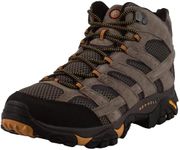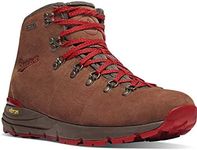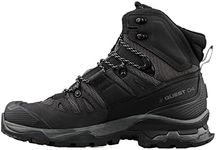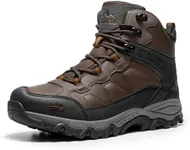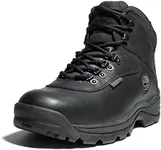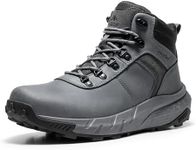Buying Guide for the Best Leather Walking Boots
Choosing the right leather walking boots is essential for comfort, support, and durability during your outdoor adventures. The perfect pair will depend on your specific needs, such as the type of terrain you'll be walking on, the weather conditions, and your personal preferences. Here are some key specifications to consider when selecting leather walking boots, along with explanations to help you make an informed decision.Material QualityThe quality of the leather used in the boots is crucial for durability and comfort. Full-grain leather is the highest quality and offers excellent durability and water resistance, making it ideal for rugged terrains and long hikes. Split-grain leather is lighter and more breathable but less durable. Nubuck leather is sanded to give a suede-like finish, offering a balance between durability and comfort. Choose full-grain leather for heavy-duty use, split-grain for lighter hikes, and nubuck for a mix of both.
WaterproofingWaterproofing is important to keep your feet dry in wet conditions. Boots can be treated with waterproof coatings or have built-in waterproof membranes like Gore-Tex. Waterproof boots are essential if you plan to hike in rainy or snowy conditions. If you mostly hike in dry areas, you might prioritize breathability over waterproofing.
Fit and ComfortA good fit is essential to prevent blisters and ensure comfort. Boots should fit snugly around your foot without being too tight. Consider the shape of your foot and try on boots with the socks you plan to wear while hiking. Look for boots with padded collars and tongues for added comfort. If you have wide feet, ensure the boots come in wide sizes.
Support and StabilitySupport and stability are crucial for preventing injuries on uneven terrain. Look for boots with good ankle support, which is provided by higher-cut designs. The midsole material also affects support; EVA (ethylene vinyl acetate) is lightweight and cushioned, while PU (polyurethane) is firmer and more durable. Choose higher-cut boots and firmer midsoles for rough terrains and lower-cut, cushioned options for easier trails.
Sole and TractionThe sole of the boot affects traction and grip. Rubber soles with deep lugs provide better grip on various surfaces, including mud and rocks. Vibram soles are known for their high quality and durability. If you plan to hike on slippery or uneven terrain, prioritize boots with aggressive tread patterns. For well-maintained trails, a less aggressive sole may suffice.
WeightThe weight of the boots can impact your energy levels during long hikes. Heavier boots offer more durability and support but can be tiring over long distances. Lightweight boots are more comfortable for shorter hikes and less demanding trails. Consider the length and difficulty of your hikes when choosing the weight of your boots.
BreathabilityBreathability is important to keep your feet cool and dry, especially in warm weather. Leather boots can be less breathable than synthetic materials, but some designs incorporate breathable linings or perforations. If you hike in hot climates, look for boots with enhanced breathability features. For colder climates, breathability may be less of a priority.


